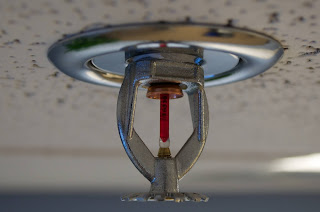A Brief Account of Fire System Installation For Your Perusal
In today's era, the role of fire suppression systems has become more pronounced as the functionalities are categorised under three distinct roles, identifying fire, engaging appropriate response as per the scale of the incident, and suppressing fire. The fire solutions are designed, installed, and maintained with respect to Australian Fire Protection Standards.

The fire suppression system is designed and engineered in a way such that it can detect fire and automatically respond to potential threats.
The built-in components of a fire suppressor will detect fire and its causes it. The systems are specifically applicable for commercial and residential facilities. They are most aptly used in units involving plant equipment. These suppression systems promise different levels of protection which are absent in traditional systems like fire sprinklers and others. The five distinct variants of fire suppressors are as follows:
Environment-friendly Foam Deluge system
The device is specially designed for extinguishing fire emanating from chemical combustion. In certain scenarios where the application of water turns hazardous, the use of an environment-friendly foam deluge system becomes more prominent.
Dry chemical
This scenario involves the use of a dry powdered chemical which helps extinguish the fire. This kind of fire system installation in Sydney is responsible for overhead applications involving the protection of larger areas with multiple as well as varying obstacles.
Water mist system
Another chief fire suppressor device that helps in controlling fire is the water mist system which produces finer droplets of water applicable on enclosed areas enabled with class C-related gas fire. There are high flow nozzles that are further used for protecting oil transformers that run on high voltage.
Gaseous systems termed as Clean Agent systems
They are typically applicable in switch and computer rooms that house sensitive equipment which are vulnerable to water exposure. The system is engineered to reduce combustion by lowering oxygen through a chemical reaction.
Early detection systems
It involves use of infrared technology. The fire suppressor system also uses air sampling methods especially around sensitive areas for early detection of fire and seeking targeted actions like shutting down power and controlled discharge of an agent.
Why is maintenance of fire suppressing systems important
It is critical to maintain the fire suppression system. Time to time maintenance helps detect potential errors with the system. If you want to stay alerted all the time it is crucial you maintain it at regular intervals. For maintenance of the fire suppression facility hire level 3 engineers in Sydney.
Maintenance of fire suppressors help avert accidents stemming from fire.
Related Blogpost:


Comments
Post a Comment